Philliplitost - Phillip Litost



More Posts from Philliplitost and Others




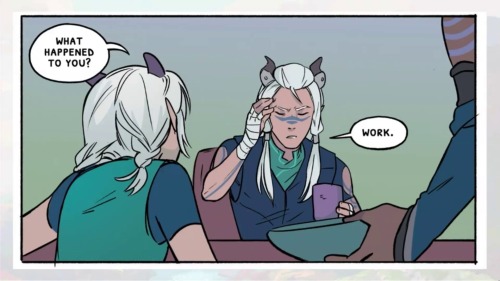

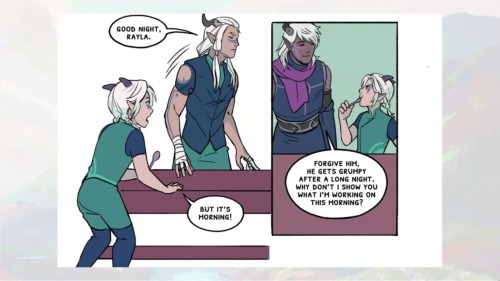
BLOODMOON HUNTRESS SNEAK PEEK EVERYONE!!!!!
This is the original version of the track from Banyuu Inryoku’s musical Kaspar Hauser performed in 1995.

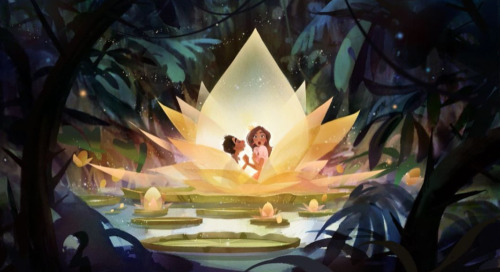
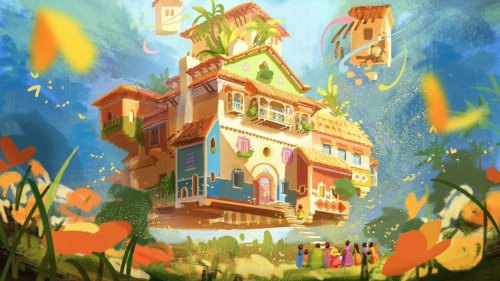







Encanto concept art by Camille Andre
◉ Click the pictures to read about each one!
FEATURE: Revolutionary Girl Utena Is Too Much, That's Why It's Great

Once upon a time, there was a girl named Utena who wanted to be a prince. At Ohtori Academy, she met another girl named Anthy, who is engaged to a cruel member of the student council. There is a secret ritual at Ohtori in which the student council duels each other for the right to possess her. Utena refuses to allow this to go on any longer and wins Anthy’s hand after school in an arena deep in the woods under the shadow of a fairy tale castle. With this decision, Utena stakes her claim to the nobility of the prince who inspired her. But what does it mean to be noble, anyway?
So begins Revolutionary Girl Utena, an anime series assembled by former Sailor Moon staffers under the Be-Papas label. But Utena is far more than just that. It’s a festival of gorgeous imagery, teen melodrama, and operatic prog rock. It has a skewed sense of humor that encompasses surfing elephants and pooping monkeys, but is at times one of the scariest and most unnerving anime ever produced. The show’s staff list includes Academy Award-nominated directors like Mamoru Hosada, as well as anime luminaries like MUSHI-SHI’s Hiroshi Nagahama and art director Chieko Nakamura. It’s one of the best anime of the ‘90s and might be my all-time favorite depending on how I feel that day.
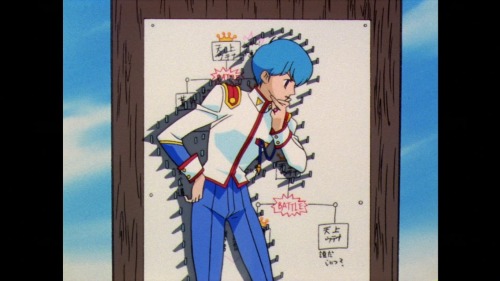
Revolutionary Girl Utena is overflowing with stuff. There’s the classic moments that have spread through popular culture, like Utena doing a flip in the dueling arena or the Sword of Dios erupting from Anthy’s chest. Then there’s the symbolism: multi-colored roses, fine art, and weird goofy animals. There’s are countless references to other things: fans mention Demian and Twin Peaks as clear inspirations, but it wasn’t until recently that I realized the debt the show owes Keiko Takemiya’s seminal boys’ love comic Kaze to Ki no Uta (Song of the Wind and Trees). Series director Kunihiko Ikuhara has earned a reputation over the years as an uncompromising auteur, but in hindsight, I think his talent isn’t so much originality as it is his capacity as a remixer: taking different styles and motifs — for instance, Sailor Moon and avant-garde ‘70s Shuji Terayama plays — and combining them in unexpected ways. The result is a frightening Katamari ball of repurposed pop culture united under a singular visual aesthetic.
The show’s breadth grants the creators the time and space to indulge in some truly weird ideas. One of the most iconic parts of the series are the shadow girl sequences, which appear like clockwork before an episode’s duel and are either a key for its themes or a joke at the viewer’s expense — or both. Then there are the Nanami episodes, which delight in finding new and hilarious ways to torture the show’s resident mean girl. An entire third of the show is devoted to the Black Rose Arc, which puts Utena and Anthy’s story on hold to flesh out the side cast and crank up the horror imagery. Despite its lack of relevance to the show’s “main plot,” the Black Rose Arc alone is a favorite of several folks I know and foreshadows all of Ikuhara’s later work. I can’t imagine the show without it.

Plenty of anime has since come along bearing Utena’s influence. Some of them were created by Utena staff members, like 2019’s Sarazanmai. Others are disciples of later Ikuhara-directed projects; for instance, Shouko Nakamura led a crew of Penguindrum alumni to create the charming film Classmates, while the visually stunning Revue Starlight anime franchise is led by Yuri Bear Storm director Tomohiro Furukawa and his team. Across the seas, Steven Universe bears Utena’s print. Even the massively popular phone game Fate/GO has some Utena DNA through its writers’ shared interest in the series. Some of these works have managed to approach Utena’s substance, while others have equaled or even exceeded its style. Yet I’d say that none of these series have managed to fully encompass what Utena was at its best. Even my pick for the best of the lot, fellow Sailor Moon alumni Ikuko Itoh’s marvelous Princess Tutu, lacks just a bit of Utena’s spice by comparison.
Utena has plenty of style and substance, but I wouldn’t say either of those elements is the show’s true secret sauce. One potential answer is its cruelty. Utena allows its cast to be genuinely mean to each other in ways that contemporaries like Revue Starlight never allow. At the same time, the show tackles themes that child-friendly series like Steven Universe and Princess Tutu could or would not touch: rape, incest, abuse. That is not to say that Utena does so perfectly. While rewatching the series this year with friends, I found myself questioning exactly what the creators were trying to do with certain scenes (especially in the show’s final arc), or wondering if they were being too knowing or flippant with such loaded material. I wouldn’t begrudge people who find it to be too much for them, or prefer work that takes a less aggressive approach. Personally, though, I appreciate Utena’s willingness to delve into messy and conflicted feelings. I think the show’s heart is in the right place even if it can be mean to its audience.

That said, rather than cruelty, I think the true answer is the show’s size. At 39 episodes, Revolutionary Girl Utena sprawls, replete with weird little cul de sacs and dead ends. These indulgences are inseparable from the show’s character. When I first watched the show as a teenager, I thought it was perfect. With the benefit of hindsight, I see that the series isn’t a pristine monument, but a tangled bird’s nest. Yet that’s exactly what makes the show as a whole so enduring. No other anime of its kind is as shocking, hilarious, dramatic or even boring for so much time. Utena is not any weaker for being overstuffed. Utena is great because it is overstuffed.
That great uncompromising size and density has drawn writers to the show over the years like moths to a flame. Enterprising readers looking for an episodic guide to the series might turn to Vrai Kaiser’s Consulting Analyst or Dee Hogan’s Utena Watch Party. Those seeking to understand Utena’s influence on Japanese anime at large should turn to the classic blog post Ikuhara School Directors & Utena’s Legacy. If that still isn’t enough, the annals of the fansite Empty Movement will keep you busy until the End of the World. I believe that these writers are drawn to Utena not because it is intimidating or pretentious but for its generosity. It’s not so much that the answers to Utena are in doubt, as that there are so many answers you could continue to write about the series for years and still never cover them all. Like Revolutionary Girl Utena itself, their collective efforts are an act of love. As Be-Papas honored what they loved in their work, we honor them. Meanwhile, Utena endures: a gorgeous, funny, scary, frustrating, outrageous, weird, and always surprising masterpiece.
Are you a Revolutionary Girl Utena fan? What is your favorite Nanami episode? Do you ever find yourself singing “Zettai Unmei Mokushiroku” while walking up staircases? Let us know in the comments!

Adam W is a Features Writer at Crunchyroll. When he isn’t rewatching the Utena movie every New Year’s Eve, he sporadically contributes with a loose coalition of friends to a blog called Isn’t it Electrifying? You can find him on Twitter at: @wendeego
Do you love writing? Do you love anime? If you have an idea for a feature, pitch it to Crunchyroll Features!
By: Adam Wescott
Hello folks! I’ve put together a package for the Utena Sega Saturn game for ease of access for anyone wanting to play!

Contains: -ISOs for both disks
- translation files
-instructions
-emulator
-virtual disc drive
You can find it here
Please let me know if there’s any issues with the files or link!
(Image source in content source below, from Empty Movement, game source was found on the old Empty Movement Forums and compiled and uploaded by me.)
The Shadow Faced Influence of Junichi Nakahara

Junichi Nakahara (1913-1988) was a prominent artist well-known for his illustrations, fashion designs, interior decorating and doll making. He started out as a dress designer and fashion illustrator and in the 1920s he was attracted to illustrating for Shojo magazines* and produced the cover art for several issues of “Shojo no Tomo” (Girls’ Friend) up into the ’30s.
His lyrical illustrations of young girls with big eyes were famous and people consider him as a forerunner of manga art. (Bio and image source)
Junichi Nakahara also created a series of fairy tale illustrations that features the silhouettes of his subjects.


These elegant depictions of fantasy would become direct inspiration for the box art of Revolutionary Girl Utena.

As well as the bumpers for Sailor Moon Crystal

But this art style involving shadowy figures can be found in other examples of anime, such as in the opening of the shoujo series Dear Brother.

It even pops up in non-shoujo titles such as Arakawa Under the Bridge.

While many anime fans might not of ever heard of Junichi Nakahara his influence is clearly still around.
Thanks to featherfleece for making this connection.


Si Rakan y Sett fueran amigos...


If Rakan and Sett were friends...
-
 purpleshite liked this · 5 years ago
purpleshite liked this · 5 years ago -
 cesar8102001 liked this · 5 years ago
cesar8102001 liked this · 5 years ago -
 ourdragoria liked this · 5 years ago
ourdragoria liked this · 5 years ago -
 kevinx153 liked this · 5 years ago
kevinx153 liked this · 5 years ago -
 philliplitost reblogged this · 5 years ago
philliplitost reblogged this · 5 years ago



